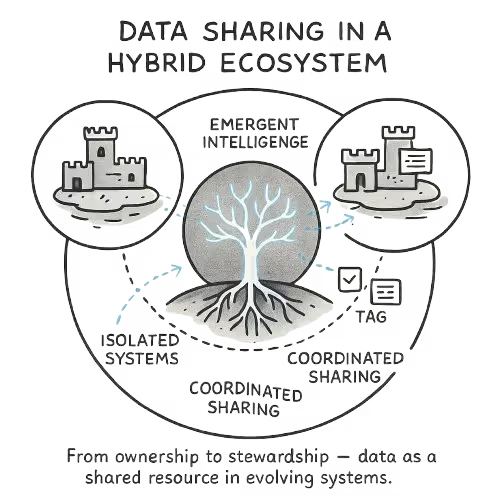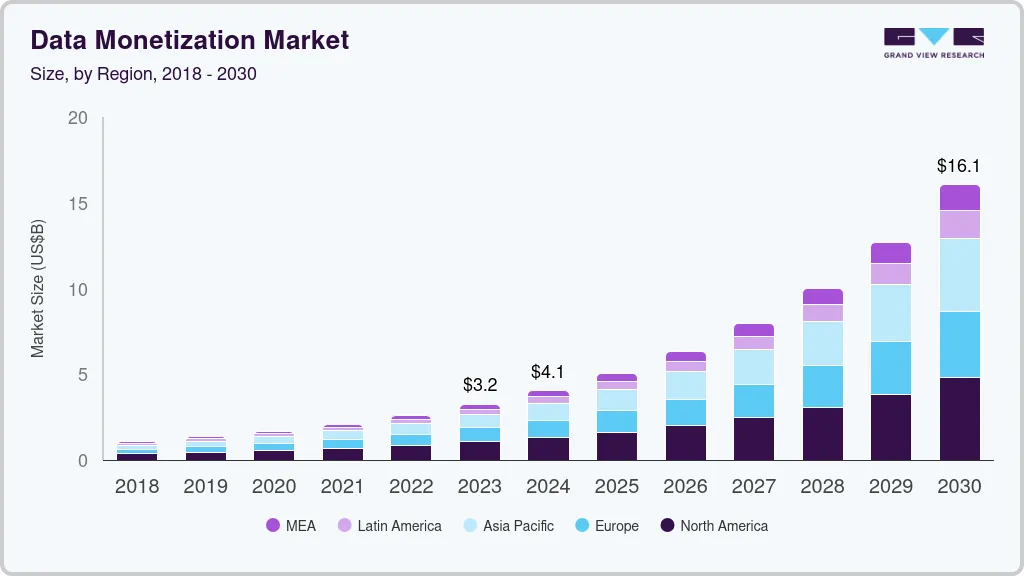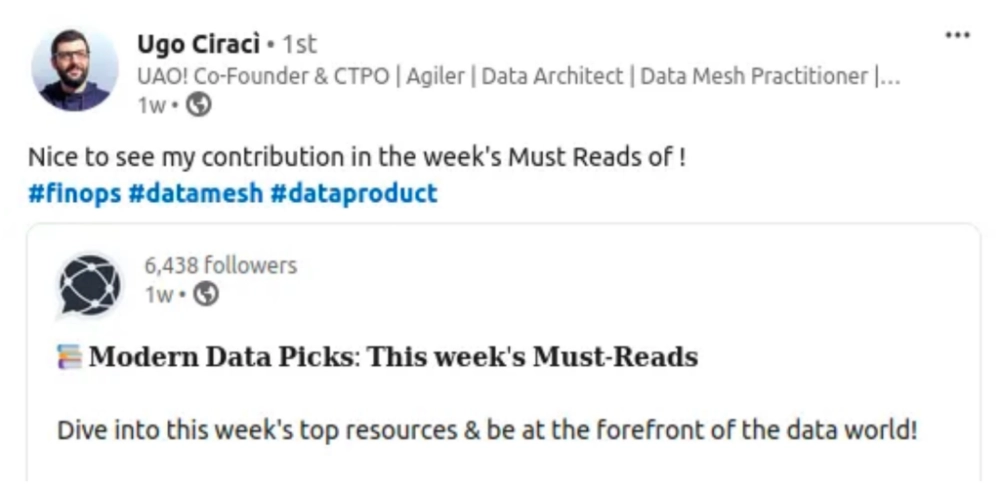
TL;DR
Why Data Product Management Now?
The modern data ecosystem is undergoing a transformational shift, visible in how things are changing from the accumulation of data in passive lakes and warehouses to the purposeful designing and deployment of data products built for the fulfilment of business objectives like never before.
This is not just an architectural shift; it’s a shift driven by the importance of strategic decisions for the successful survival of enterprises in the long run. Where product managers spent 45% less time in strategic thinking, this has now changed. Boardroom-level meetings are now discussing at length better ways to move beyond data for fulfilling just compliances or analytics and use that data for unlocking accurate, reliable, and repetitive value.
This is product thinking at work in the data space.
Taking inferences from the process of digital product development, product thinking brings a proper structure to prioritise user requirements, lifecycle management, iterative delivery, and success measurement. At the same time, teams are enabled to move on from fragmented, individual pipelines to a reusable and scalable infrastructure supporting a vast network of data products.
What also cannot be ruled out is that great organisations continue to scale, bringing challenges in scaling governance, trust, and reuse, making these activities more difficult. Data products are not properly maintained if not for the productisation thought, which is why teams have a tough time defining ownership, versioning, or even understanding where and how the data can be used. It is a pretty bad situation to be in, one that throws everything into chaos.
The role of a data product manager in such situations can be a game-changer, cutting out the gaps between the usefulness of data and business value. Data product managers help in carving a vision for the products, ensuring stakeholder alignment, and embedding governance as well as security right from the design process itself so that each delivered dataset is discoverable, usable, and outcome-oriented.
As the present data ecosystem evolves with newer concepts around productising data, data product management is no longer an optional activity for organisations looking to leverage their technical prowess into sustained competitive advantage.
8 Best Data Product Management Practices
For any data product owner in an enterprise, the stage is set. Positioned between different business functions, the responsibility is to act as a bridge between AI and data teams with stakeholders to ensure proper alignment.
Below, we explore eight best data product management practices that can be integral to assisting enterprises in unlocking the full potential of their product strategy.
1. Begin with Business Impact, Not with Data
One of the biggest mistakes enterprises make in their data initiatives is trying to start with the available data and not with the business impact they envision. Teams that create data products without a clear outcome in their mind will deliver technically mature output. Still, they won’t be able to do something for the achievement of business objectives defined among stakeholders.

A better way to begin is by identifying measurable business metrics; for instance, they can be churn reduction, increased conversion rates, and quicker decision-making. The data product, too, should support the finalised metrics. They can also be linked to data product KPIs, as they play a significant role when it comes to measuring business impact. The transition to outcome-driven data from a data-first approach ensures clarity in design, making sure that the product is usable too.
Having outcome-focused thinking helps in avoiding waste, reduces feedback cycles, and sets up a product mindset in domain teams.
2. Give Metadata in a Leading Role, Not a Supporting One
When it comes to data product management, metadata is never a supporting element; it’s a central element to ensure effective governance and usability of the product. If integrated from the first day itself, metadata elevates discoverability, transparency, and trust across teams. Despite so much on offer, organisations tend to treat metadata as an afterthought, mostly using it when products are already in use.
To see that this doesn’t happen, define a metadata management plan with the product roadmap. Leverage a data catalogue with active support for the metadata to integrate it with the available dashboards and pipelines. Also, embed data lineage to help users track the origin and transformation of every data point so that trust can be easily established and validated.
Metadata that’s well-structured also helps in enabling automation, with instances such as triggering auto-alerts and assisting in documentation.
3. Clarity in Accountability and Ownership
Even the best-designed data products can suffer if the roles haven’t been defined clearly. Lack of clarity in roles, in fact, has a 35% weightage when it comes to product managers struggling to complete their objectives.
Defining clear accountability and ownership is crucial to maintaining quality, ensuring adherence to SLAs, as well as ensuring continuous improvement. For this, there is a need for organisations to move beyond unclear responsibilities and create an accountability matrix linking individuals as well as teams to product functions.
A robust ownership model has:
- Data product owners are responsible for defining their vision, product roadmap, as well as KPIs. 2. Data stewards for enforcing data standards and quality.
- Platform teams managing the infrastructure and related toolkits.
Apart from this, also make sure to include feedback loops as well as escalation workflows so that users are aware of how to raise issues and ask for improvements. In the case of ownership, too, there is a need to extend it across the entire product lifecycle, from ideation and development to product maintenance and depreciation.
4. Design for Reusability, not for Consumption
Reusability isn't an afterthought. It’s a design constraint that forces clarity around how your data product will evolve, scale, and plug into a wider ecosystem. If your product only works for the first consumer, it’s not a product; it’s a project.
Reusable data products separate the "what" from the "how." They abstract core data logic away from narrow use cases, exposing clean, governed outputs through well-defined contracts, be it tables, APIs, or metrics layers. That’s what allows other teams to build confidently on top of it without creating shadow forks.
This doesn’t mean making it generic. It also means making it portable. Your product should be usable in another domain, by another team, or in another tool — without breaking context. Reusability isn't just about saving time; it’s how you avoid rework, preserve trust, and enable scale.
5. High Priority on Data Product UX
Similar to any digital product, data products also rely on a great user experience (UX) to ensure a positive experience for users. More than usual, datasets are technically very sound but extremely unusable because they struggle with poor documentation, cluttered semantics, and inaccessible formats, to name some of the most pressing issues.
To ensure great UX for data products, there is a need to begin with a proper understanding of user domains, such as data scientists, analysts, as well as business leaders, and then design for their dynamic needs. This is made possible through:
- Ensuring that the documentation is searchable, contextual, and properly embedded.
- Developing oboarding workflows for enabling users understand product intent, challenges, and structures.
- Self-service interfaces with immersive interfaces.
6. Setting a Clearly Defined Product Lifecycle
A data product without a lifecycle is a liability. It’s unclear who owns it, how reliable it is, or whether it’s still fit for purpose. This is where most data efforts break; pilots get stuck as “good enough,” production assets lack a feedback loop, and nobody knows what’s actively in use versus what’s just noise.
A proper lifecycle fixes that. It starts with scoping; defining the problem, the consumer, and the outcome the product is meant to drive. Then comes requirement-modelling, where you sketch the logic, outputs, and interface before committing to any build. This reduces waste and anchors delivery around value, not volume.
Build and internal testing follows, not to soft-launch, but to gather focused feedback and iterate fast. Only when the product proves its value and stability does it move to production deployment, where it gets proper contracts, access governance, monitoring, and versioning.
From there, the product enters a live state of evolution, shaped by usage telemetry and stakeholder input. And finally, when the product becomes redundant or is replaced, it goes through retirement, with intentional deprecation and communication, not silent decay.
This lifecycle isn’t a process checklist; it’s how you maintain trust. Paired with agile delivery rhythms and a maturity framework, it lets you track every product’s health, stage, and next action, so nothing floats unmanaged, and everything is built with purpose.
7. Setting Up Embedded Governance
As far as data governance is concerned, it is often bolted to the product at the time of delivery. In other words, governance is treated as an external process. Instead, it should be embedded into the product design itself.
Embedding governance translates into setting up validation rules, access controls, as well as compliance policies as code, ensuring that they are automatically enforced. Many modern tools help implement policies as code, integrating rules directly into the platforms and pipelines.
You can also set up monitoring tools to track lineage and data quality, assistive in building visibility and trust. This approach offers simple audits, and better data compliance while ensuring that governance does not slow down innovation and, instead, scales with it.
8. Balancing Centralisation with Domain Ownership
When organisations scale, dividing responsibilities between central teams and domain teams is one of the biggest challenges. While too much autonomy can lead to chaos, too much centralisation will lead to the creation of bottlenecks.
The solution? A federated model.
Just like the data mesh dynamic, successful enterprises adopt decentralised ownership with central platforms with safety measures, such as governance templates, tooling, as well as access management. It helps in creating a balance where:
- Domains enjoy the authority to have their own data products and autonomy for innovation.
- Platform teams help in setting alignment with global standards.
- Federated governance helps in cutting the gap between them, enabling smooth compliance.
Two Added Practices for Perfection
For enterprises to consistently do better in data product management, they need to go beyond the foundational practices, adopting elements that separate them from the rest and give them an edge over others. What comes to the fore is a data organisation into a value-driven ecosystem.
The role of data product managers also becomes important in ensuring that the effort trickles far and down into the organisation, an ideal situation for a practicing product manager.
- Investing in Interoperability by Design Data products usually never operate in isolation in large-scale enterprises. Multiple teams are integrated into different systems, which are often further synced to product up in the order. In such a situation, interoperability becomes a huge feature, one that cannot be treated as an afterthought.
- Designing for interoperability means ensuring that data products in an enterprise converse in a common language for seamless communication between other systems and teams. Well-documented APIs with semantic consistency reduce a lot of misinterpretation and confusion among teams and domains.
- Cross-team integration is another element when it comes to designing for effective data product management. There should be a conscious effort for collaboration without too many tweaks and manual effort.
- Measuring and Communicating Business Value Consistently The strongest of data products find themselves in a pickle if they are unable to reflect tangible business impact. Many data teams find it challenging to track and communicate the value of their work effectively, precisely the place where ROI measurement becomes an essential prerequisite.
Teams that do well are adept in linking data products to their core business objectives, such as operational efficiency and cost savings, and tracking their evolution over a period of time. It may include the measurement of usage patterns, downstream impact, qualitative feedback, and feedback from consumers.
But measurement is a job half done. Setting a promising narrative through storytelling is the other half. Effectively communicating data’s business impact to non-technical stakeholders enables building trust and credibility, as well as consistent investment, changing the general perspective to data as a driver of growth.
Pitfalls to Avoid in Data Product Management
As organisations shift towards the data product thinking paradigm, a lot of them fall into the rut of avoidable issues that can be detrimental to success in the long run. Recognising some common mistakes in data product management is crucial to creating products that are scalable, usable, and aligned with the value a business is expected to offer.
- Overstandardisation is one of the biggest anti-patterns. There’s no doubt that governance and consistency are crucial, but setting up and enforcing too many rigid ones can block teams from thinking about real-life cases. Standards need to evolve gradually as the product matures.
- Overengineering is another big pitfall, where engineering teams tend to create products with too much complexity just for the sake of scale and not for usability and actual impact. The result is increased technical effort but bad adoption because the needs of real users were not prioritised.
- Unclear ownership roles can lead to chaos in operations. In the absence of a robust accountability matrix, there is duplication, quality issues are ignored, and there is a lack of vision when it comes to the data product approach.
- Underinvestment in value is again an issue. Without a clear definition of the KPIs and feedback mechanisms, organisations make it difficult for themselves to track what is working, hampering stakeholder interest and dampening the ROI aspect of the process.
Final Thoughts: From Data Projects to Product Initiatives
The shift from on-the-fly data projects to value-driven data product initiatives highlights a tipping point in how organisations are looking to derive value from their data. With the data as a product approach, teams can better align with business outcomes realistically, create a culture of accountability, and embed governance by design, among other activities.
The transformation is no longer confined to just tools; it has become more about integrating some of the best practices into the data operating model, where each element comes together beautifully to support business needs with perfection.
Join the Global Community of 10K+ Data Product Leaders, Practitioners, and Customers!
Connect with a global community of data experts to share and learn about data products, data platforms, and all things modern data! Subscribe to moderndata101.com for a host of other resources on Data Product management and more!
.avif)
A few highlights from ModernData101.com
📒 A Customisable Copy of the Data Product Playbook ↗️
🎬 Tune in to the Weekly Newsletter from Industry Experts ↗️
♼ Quarterly State of Data Products ↗️
🗞️ A Dedicated Feed for All Things Data ↗️
📖 End-to-End Modules with Actionable Insights ↗️
*Managed by the team at Modern
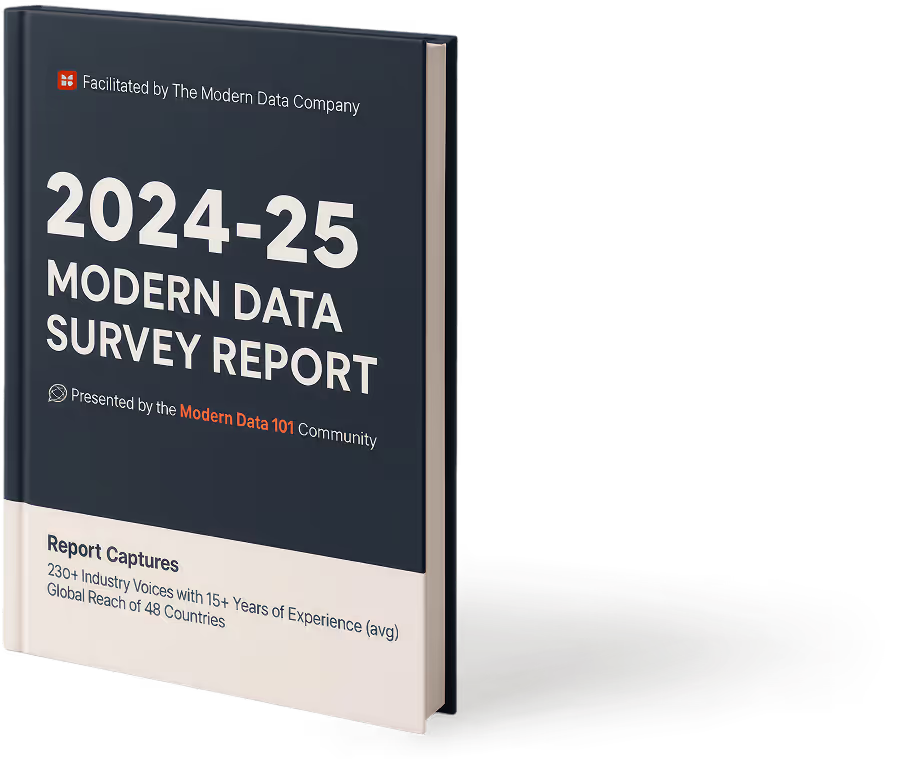
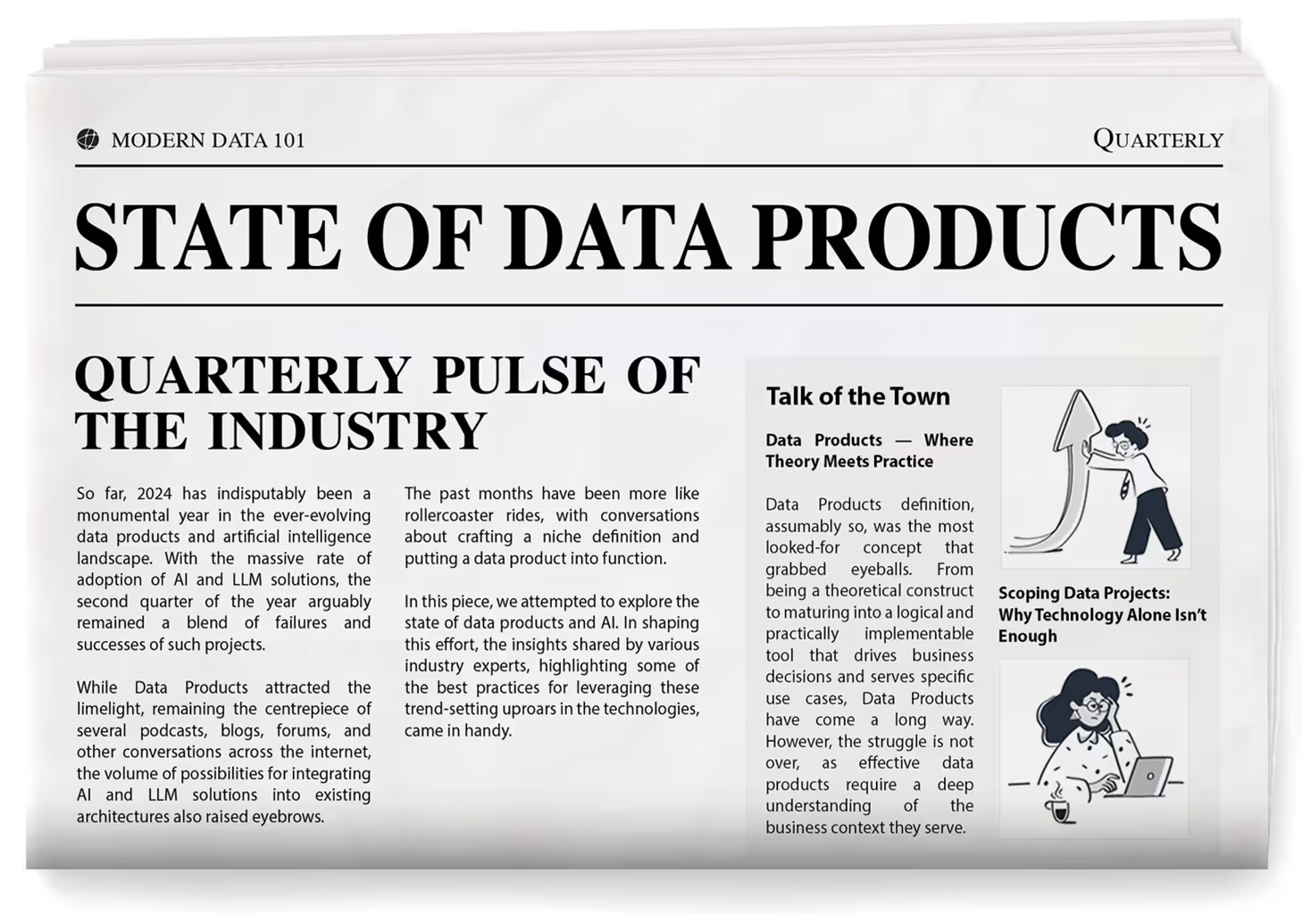

Author Connect 🖋️

Simran Singh Arora

Simran is a content marketing & SEO specialist.
Simran is a content marketing & SEO specialist.

More about
8 Data Product Management Best Practices That Organisations Should Consider
Checkout our

Community resources
and

Related articles




